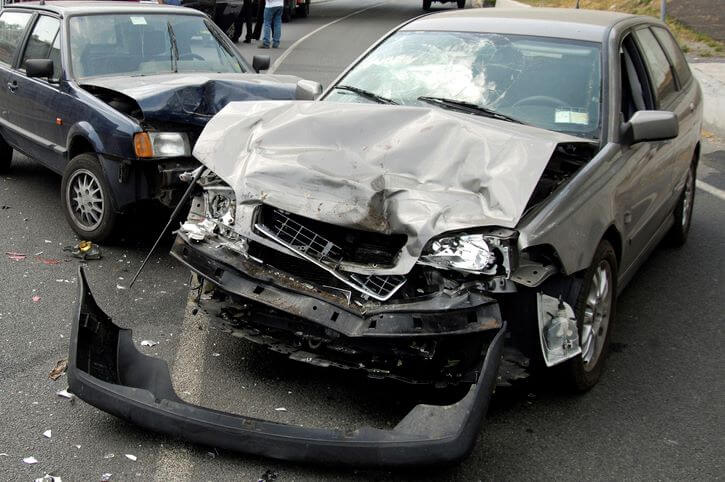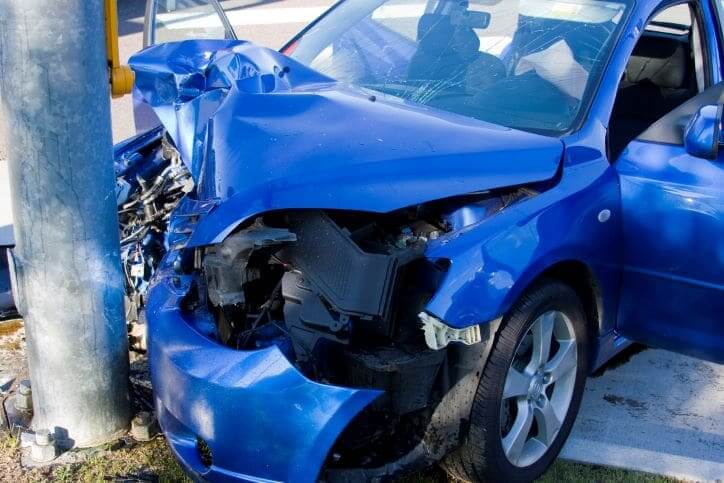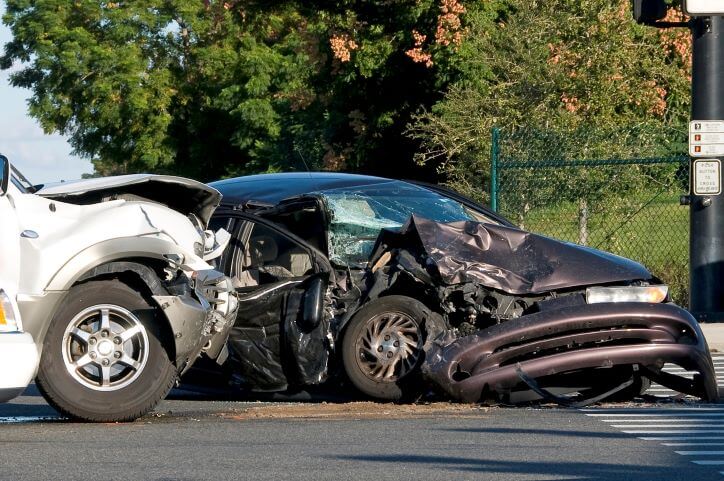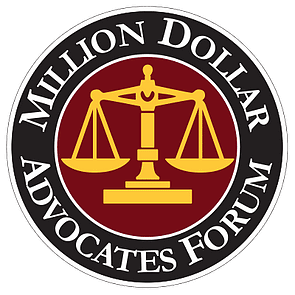
START YOUR FREE CONSULTATION
NO FEES UNLESS WE WIN!
Life can be full of surprises. Unfortunately, not all of these surprises are good. Car accidents are unexpected and, in many cases, they come at the worst times. Motor vehicle accidents can be traumatic, life-changing, and devastating for victims. Even worse, most car accidents are avoidable.
Even though there’s no way to predict precisely when a collision might occur, being proactive and arming yourself with knowledge can help you stay safe on the roads. Our car accident lawyers share the five most common types of car accidents and how you might avoid them.
Call (702) 382-0000 for a free consultation
1. Low-Speed Accidents
Parking lot accidents and other low-speed collisions are usually not fatal for drivers or passengers. However, they are very common and can be dangerous, especially to pedestrians.
When drivers are going at lower speeds, they often assume that they will be safer. However, just because you are rolling through a parking lot does not mean you can take your eyes off your surroundings.
The same thing goes for backing up. In fact, the process of a vehicle backing up is one of the most dangerous times for pedestrians nearby. This is especially true in scenarios where children may be playing near a driveway where someone is backing up.
To avoid low-speed accidents, be sure to:
- Always check behind you when you back up. People and other cars may be present even if you didn’t see them previously.
- Avoid distracted driving, even in the parking lot or drive-through lane.
- Adjust your mirrors before driving an unfamiliar vehicle.
2. Single-Vehicle and No-Fault Crashes
Another type of car accident is a single-vehicle crash, most commonly seen among teen drivers. Parking lot obstacles, curbs, poles, and other fixed objects are often involved in accidents of this kind.
Inclement weather and wildlife can also cause a vehicle crash. This is especially true in areas where winters are harsh and visibility is low. These single-vehicle crashes are not usually fatal, but they can result in car accident injuries and damages.
To help prevent single-vehicle crashes, try to:
- Make sure your teen has taken driving classes before handing them the keys.
- Teach teens and young drivers about the dangers of intoxicated driving.
- Learn to look at parking lots before entering them to scan for possible obstacles.
- Always drive the speed limit and allow plenty of time to stop on icy or wet roads.
- Do not drive if there is black ice or torrential rain to avoid a rollover accident.
- Avoid driving at night or in poorly lit areas if wildlife is prevalent in your area.

3. Clipping and Sideswiping
Sideswiping is another common car accident type. Sideswiping is when two vehicles touch because they are forced to share the same lane. When cars merge, the risk of being sideswiped greatly increases. Although rarely fatal, sideswiping can be deadly when motorcycles are involved.
To avoid being sideswiped or clipping someone else:
- Always check blind spots before changing lanes.
- Try to be aware of all vehicles around you. If one of them is suddenly missing, it could be in your blind spot.
- Don’t drive with your audio too loud. You might hear a vehicle in your blind spot before seeing it.
- Avoid speeding.
- Follow the flow of traffic when you can.
- Do not drive erratically in traffic.
- Always enter and exit the interstate with care. On-ramps can be extremely dangerous if the freeway only has two open lanes at a time.
- Never assume that drivers near you can see you, as they could be distracted and try to merge when you are in their blind spot.
4. Rear-End Collisions
Rear-end collisions are ranked as one of the most common culprits of insurance claims, according to the National Highway Traffic Safety Administration (NHTSA)1. However, this is also one of the most avoidable types of automobile accidents.
To help you avoid rear-end collisions, consider the following tips:
- Keep your distance from other drivers, so you have plenty of time to stop.
- Stay 70 feet away from other cars (5 car lengths) in inclement weather.
- Follow the three-second rule2.
- Do not tailgate other vehicles.
- Drive strategically. Be prepared if the person ahead of you stops suddenly.
- Don’t get distracted while driving, as this can cause you to slam on your brakes.
- If you feel uncomfortable or like you will need to stop suddenly, let others pass you. For example, if you’re concerned with poor road conditions, it is better to let anyone tailgating you pass.
- Never drink and drive.
5. T-Bone and Side Impact Collisions
Angle collisions, like T-bone and side-impact crashes, can occur at intersections, on-ramps, interstates, and even in residential neighborhoods. When combined with distracted driving at high speeds, these types of multiple vehicle accidents are responsible for the most traffic accident fatalities3.
Left turns are one of the most common instances in which these accidents occur. Merging and lane changes are other causes of angle impact accidents. This kind of accident can be very dangerous to the driver and passengers alike, depending on the direction of impact.
Although angle accidents can be hard to avoid if you are not the at-fault driver, these driving tips could help:
- Don’t try to shoot gaps in traffic. Give all speeding vehicles plenty of time to pass.
- Look both ways in traffic.
- Take your time, even if you are in a hurry.
- Don’t drive when extremely emotional, distracted, or intoxicated.
- Do not text and drive. If you are using a map application, be sure your phone is mounted safely on your dashboard or ask for assistance from a passenger.
- Always watch and listen for motorcycles.

Avoiding Car Accidents in Las Vegas
According to recent reports4, distracted driving is the leading cause of auto accidents in Las Vegas. That means a lot of Las Vegas drivers are not paying attention as much as they should because they’re looking at their phones, eating while driving, or being distracted by passengers or pets in the vehicle.
If you’re driving in Las Vegas, you can lower your risk of a car crash by:
- Paying attention, particularly while changing lanes, in intersections, and at stop signs and lights.
- Driving defensively.
- Driving cautiously in the rain. Slick roads and flooding can increase your risk of an accident.
- Watching for congested or gridlocked streets and adjusting your speed accordingly.
Do I Need a Lawyer for My Car Crash?
No matter how carefully you drive, another driver’s negligence can cause an accident. When this happens, you need someone you can trust to fight for your rights, help you file a claim, and get the compensation you deserve.
Have you been injured in a car accident in Las Vegas? Call the top-rated injury attorneys at Adam S. Kutner. Our skilled personal injury lawyers have the experience to fully value your claim and push back against the insurance company that’s pressuring you to accept less than you deserve.
Call (702) 382-0000 for a free consultation
Adam S. Kutner is a top 100 trial lawyer with 33 years’ experience and expertise that will benefit you
Call us at (702) 382-0000 anytime to schedule a free consultation. We will work to get you the maximum settlement as quickly as possible so you can move forward on your healing journey.
START YOUR FREE CONSULTATION
NO FEES UNLESS WE WIN!
Home visits are available
Call now for details
SE HABLA ESPAÑOL

Adam S. Kutner
PERSONAL INJURY LAWYER
With more than 33 years of experience fighting for victims of personal injury in the Las Vegas Valley, attorney Adam S. Kutner knows his way around the Nevada court system and how to get clients their settlement promptly and trouble-free.














